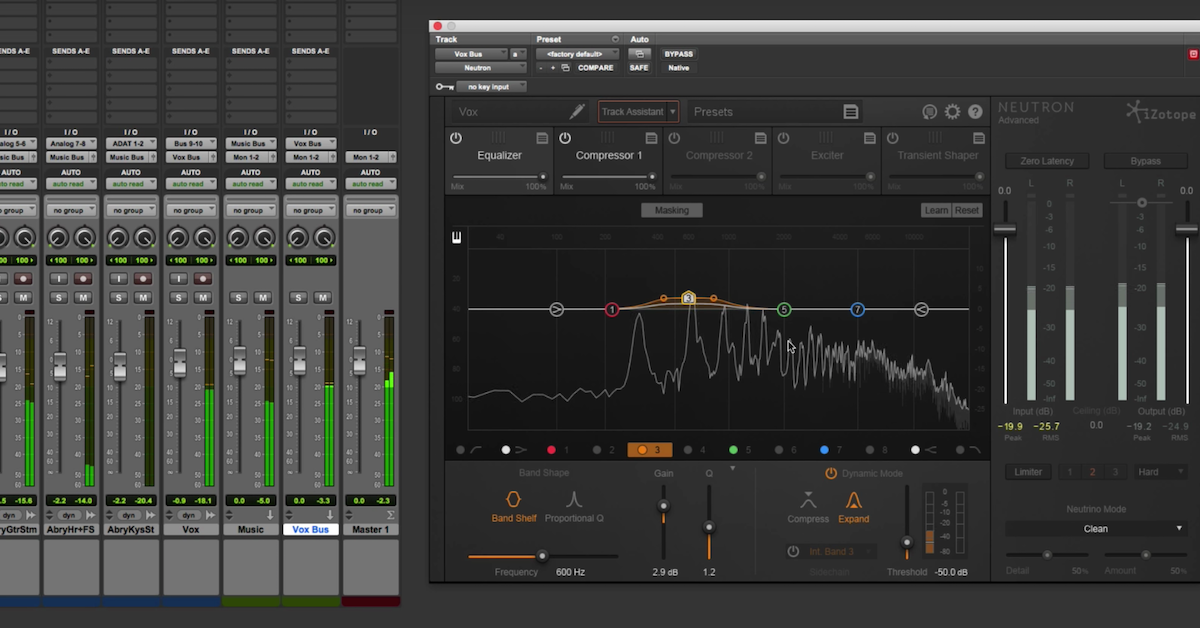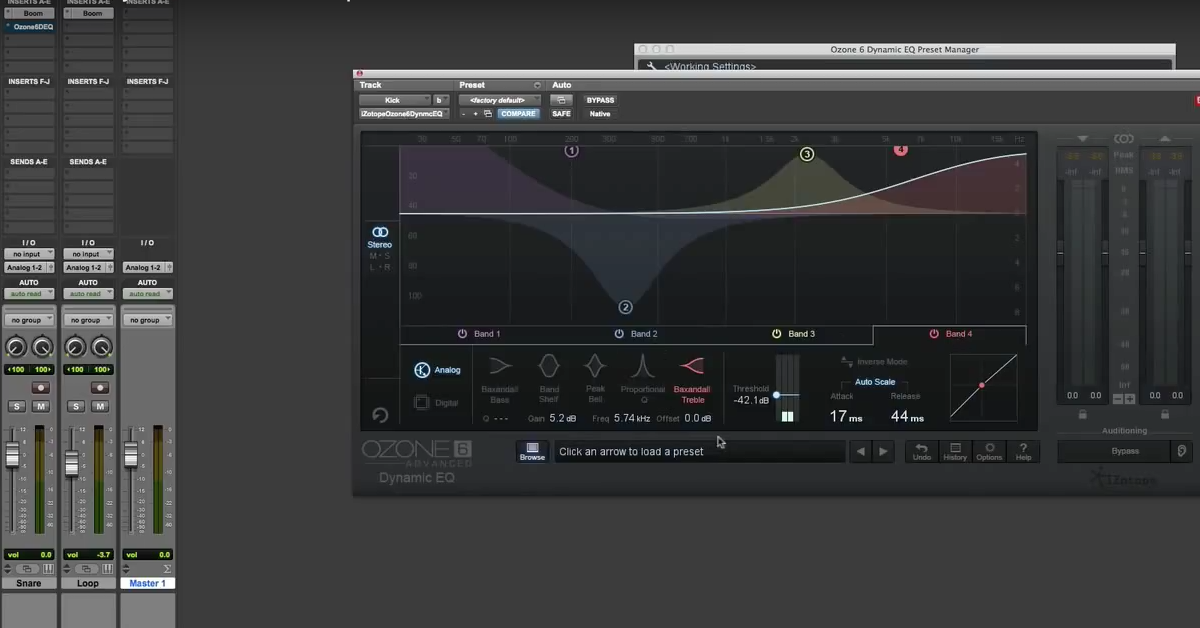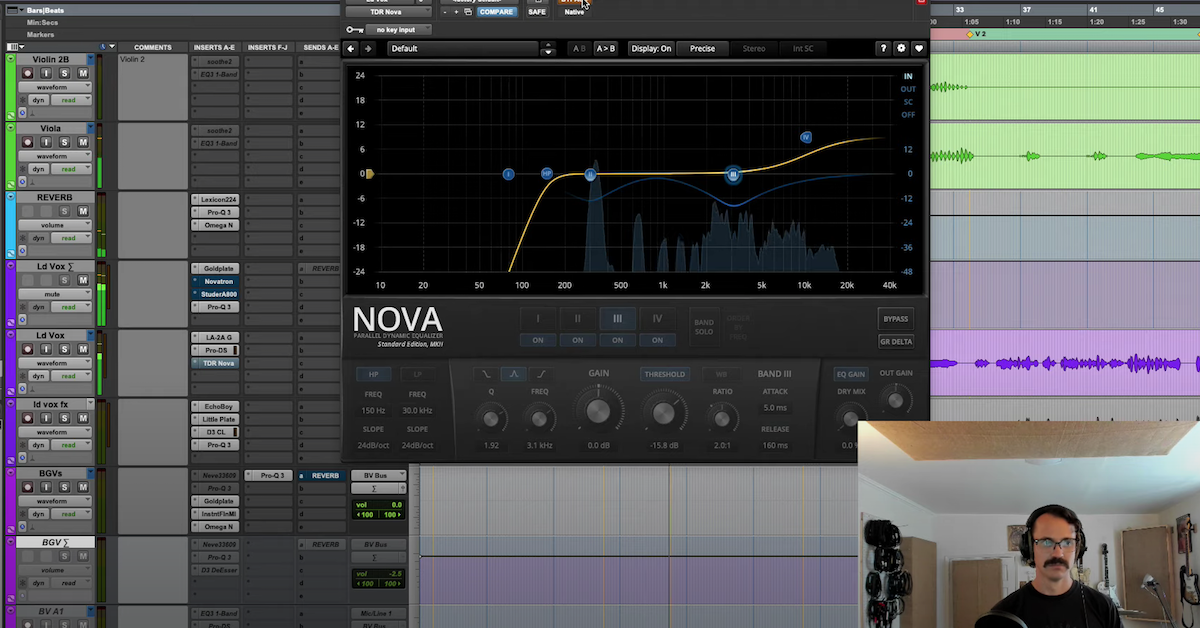5 Dynamic Ways to Think About Masking
Article Content
I want to discuss a very misunderstood concept in audio: masking.
Masking, simply put, is when one sound obfuscates another. There is a specific type of masking, often called frequency masking, where one sound (or a single component of that sound) gets in the way of the tonality of another sound. It’s something that is addressed fairly regularly and it’s an important problem to listen for.
Frequency masking, however, is a very specific issue and only a subset of a bigger problem.
Masking is first and foremost an issue of arrangement, and secondly an issue of dynamics.
Any time two things happen simultaneously they’ll interfere with each other. Often times that interference can be constructive. And often times that interference can be destructive.
How many times have you solo’d the kick and thought it sounded HUGE only to bring in the lead synth and find your kick suddenly sounds not so big? Even if the lead synth contains no bass tone. Pretty often I’d presume.
Which brings us to the real question: how do we make “space” for everything in a mix so it can be big and stand out?
1. Acknowledge That Not All Elements Are Supposed to Be Separated
If you are presented with a dense arrangement chances are some sounds are meant to overlap.
The prime example is a record that has a string section. It’s unlikely that the producer expects each violin, viola, cello and bass to stand out uniquely. Chances are the whole section is meant to sound like one source.
The same idea often applies to rhythm guitar dubs, drum layers, synth layers and so on.
If you try to make every element of a dense arrangement stand out you’ll find it to be counter productive. Certain things just sound better and work better when they run together.
2. Assign Value and Roles to Each Element
Let’s say you have a record that features guitars, bass, cello, piano, drums, and vocals. It’s impossible to figure out the balancing frequency-wise if you don’t know what role each element is playing.
Does the piano need to have a big booming low end? Or do you really only need just the percussive drive of the hammers? How important is it that you hear the finger noise from the acoustic guitar? What’s more important: the attack of the kick or the attack of the bass?
Once you start answering these kinds of questions it becomes much easier to figure out where you can begin to separate things dynamically and frequency wise.
3. Check Your Reverb Timing and the Element Dynamics
A great deal of masking can be eliminated simply by keeping your reverbs in check.
Long reverb tails sound great in solo but often get lost in the mix and contribute nothing more than noise. That noise makes other elements harder to distinguish.
Additionally, it’s important to listen for the release and sustain that’s present in different sources. You may want a healthy does of sustain in the piano for a Pop Ballad, but maybe you don’t need it to sustain heavy for an Indie-Rock record.
A big fat kick might be great for that Hip-Hop tune, but may overwhelm the low end in that Death Metal track.
It’s often easier to separate elements dynamically — giving one thing more attack while giving another more sustain — than to do it with equalization.
By keeping the dynamics in check, you can avoid a great deal of masking issues.
Don’t be afraid to gate the tail off a clap or tambourine — sometimes you don’t need that stuff and your mix will breathe better without it.
4. Now Check Your Frequency Content
So maybe you’ve found that by lowering the sustain in the piano, all of your vocals, guitars, and even drums stand out much more clearly. But it’s still not quite enough.
Ok, reach for the EQ. That’s certainly part of the equation! Just be wary. One of the biggest mistakes the early engineer makes is using too much subtractive EQ.
Pick and choose what really needs to go.
5. Pan It Out
Lastly, you have the power of stereo at your command.
By simply panning one element to the left and the other to the right, you can allow them to de-mask.
I list this one last because those elements will still overlap when folded to mono, and because I generally prefer my panning choices to be primarily artistic ones (rather than a fix for a masking issue).
But, it’s certainly effective and shouldn’t be discounted as a great tool for allowing elements to stand on their own.
Conclusion
Anyway, the moral of the story is don’t just think of masking and separation as frequency concepts. Often times a gate or expander are better tools for unmasking sounds than an EQ.
Hear the sound as a whole and determine what it really needs!





